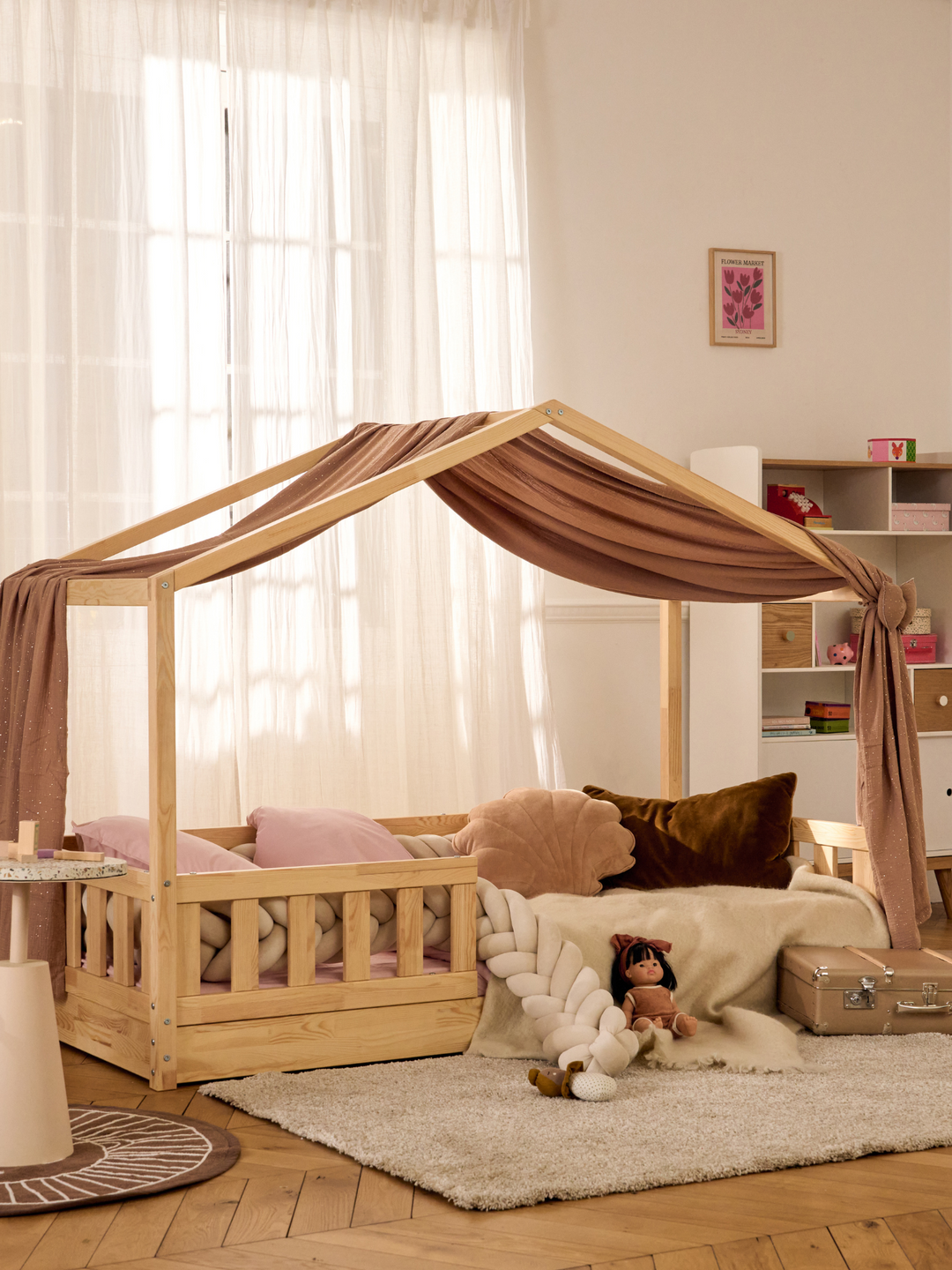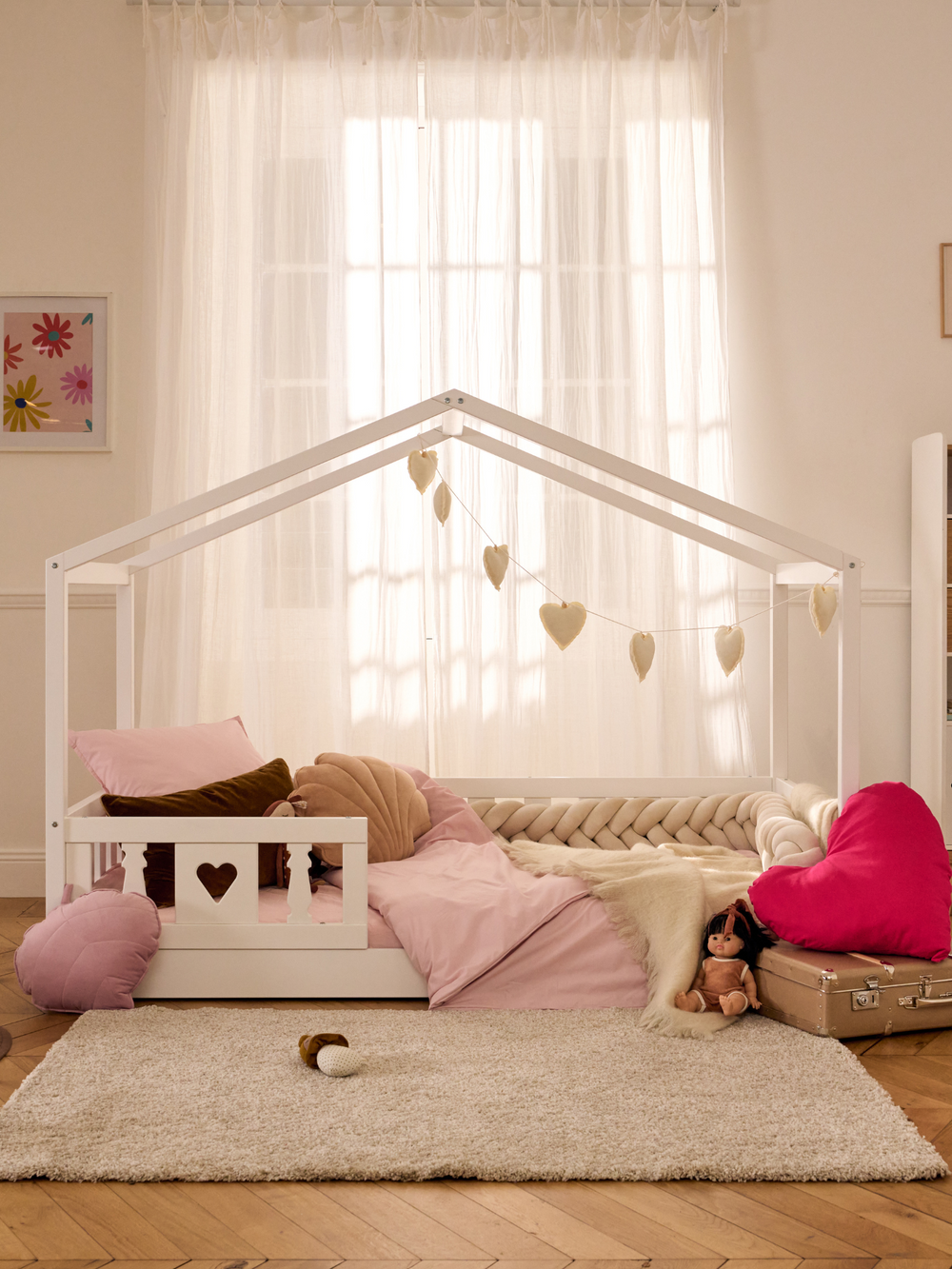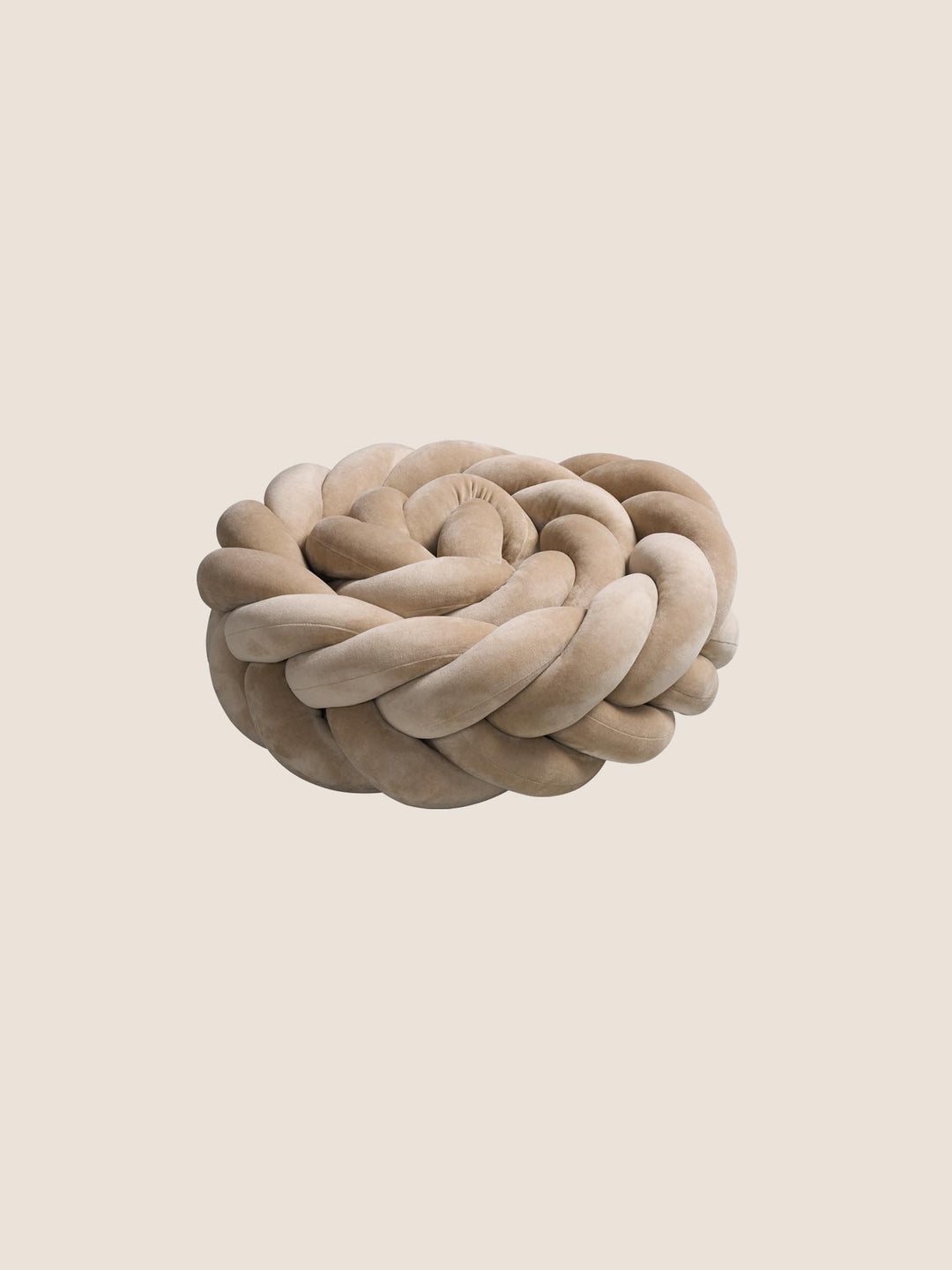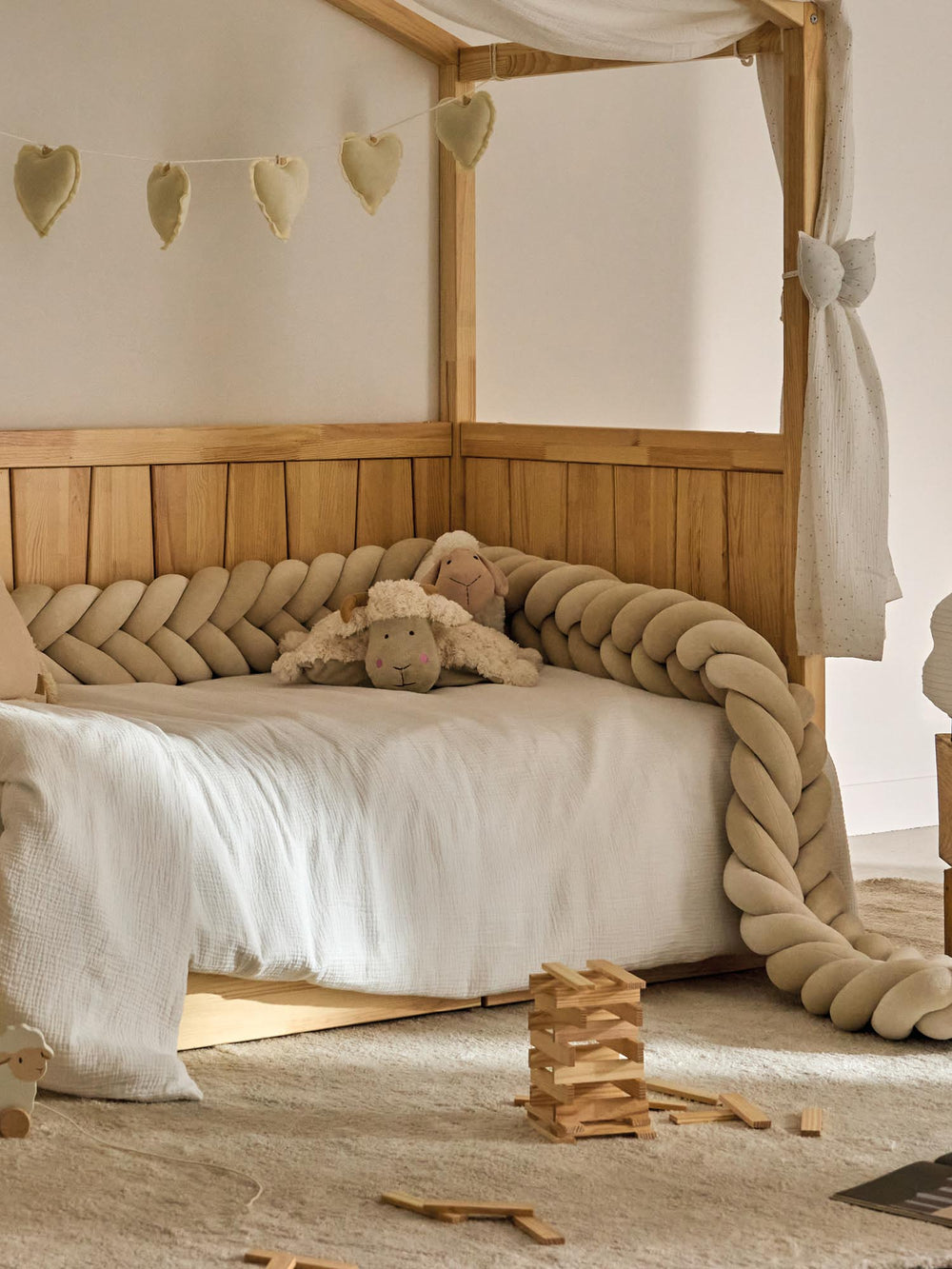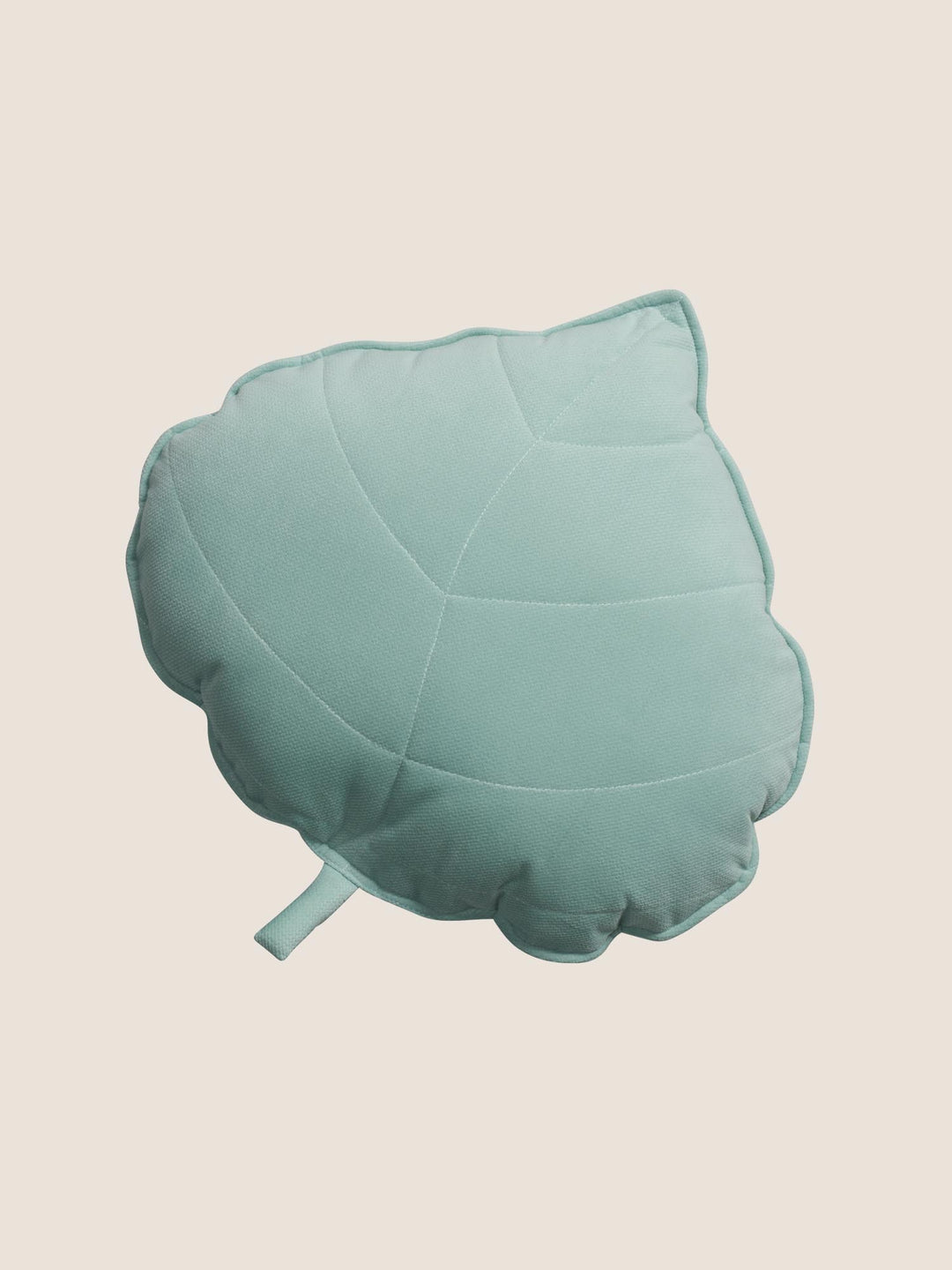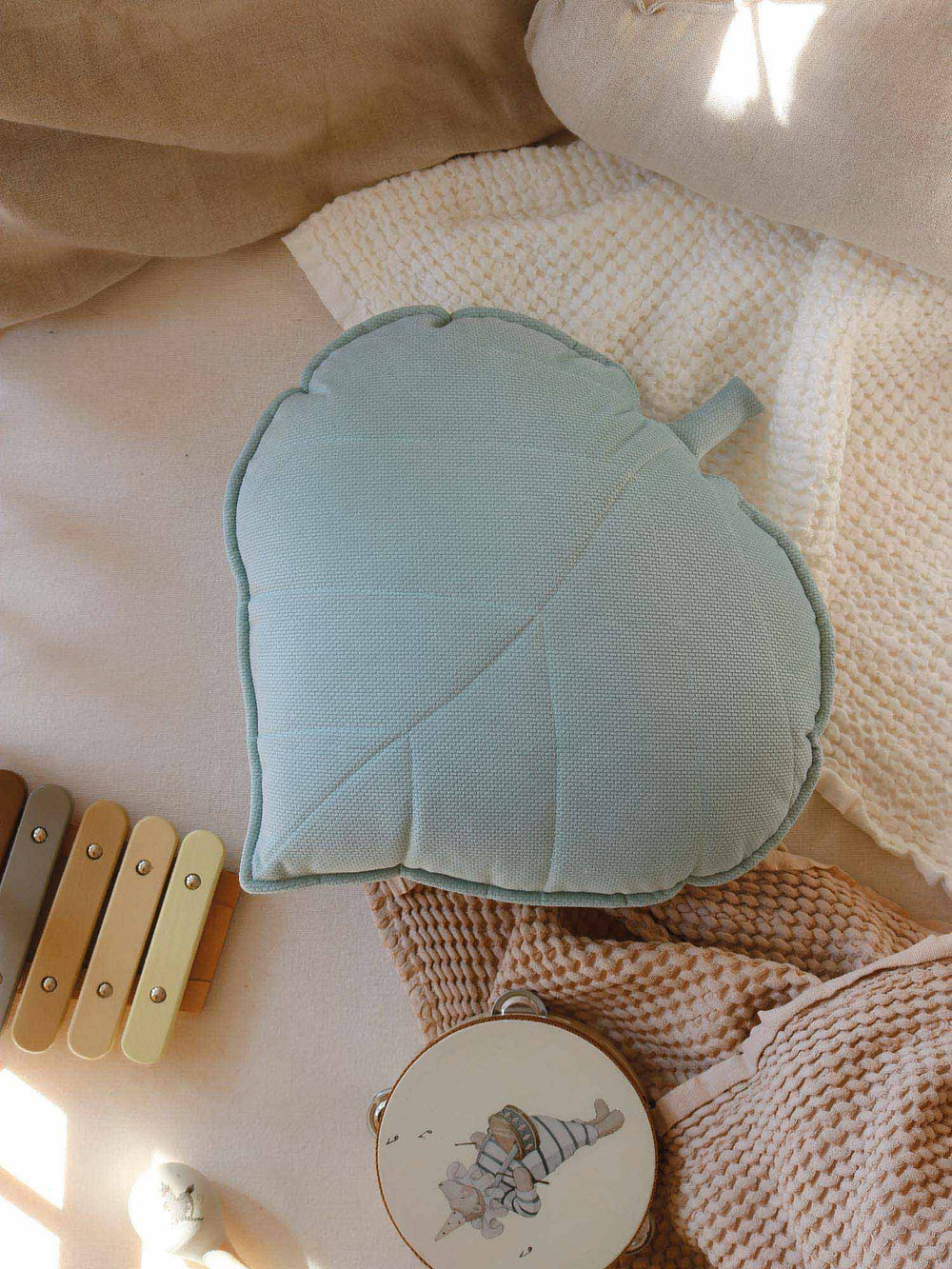Detailed description
Handcrafted.
Anti-allergic silicone fiber filling.
Technical data
Delivery
Shipped within 24 to 48 hours.
- Delivery throughout the European Union.
For interior design enthusiasts, the patchwork cushion is much more than a simple accessory. Steeped in a rich history and oscillating between tradition and modernity, the cushion has reinvented itself over the centuries. From patchwork's ancestral origins to its current evolution, our exploration begins with a journey through time.
Origins and history of the patchwork cushion
The patchwork cushion, a true interior design icon, has its roots in the ancient art of quilting. This technique, born centuries ago, consisted in assembling pieces of fabric to create warm, durable blankets. But did you know that quilting also has a symbolic dimension? Each piece of fabric tells a story, often linked to the daily life or significant events of its creator.
The beginnings of patchwork
The first traces of patchwork date back to ancient Egypt, where craftsmen were already using this method to make clothing and decorative objects. However, it was in North America in the 19th century that patchwork really took off. American pioneers gathered scraps of fabric to create quilts to warm their families during the harsh winters. These creations were much more than functional: they represented a family heritage handed down from generation to generation.
The evolution of patchwork cushions over time
Over the decades, patchwork has evolved into an art form in its own right. From simple utilitarian assemblages, it has evolved into complex, colorful artistic compositions. The patchwork cushion has thus become a masterpiece in the world of interior design. Today, it embodies not only a tradition of craftsmanship, but also a touch of originality and elegance in our homes.
Take our Coussin Patchwork n°4, lovingly crafted to celebrate our tenth anniversary. Each piece of fabric used comes from sock prototypes carefully selected and assembled by Sumika Hirasawa, an acknowledged expert in the art of textiles. This unique model perfectly reflects this evolution: an everyday object transformed into a work of art thanks to exceptional craftsmanship.
By integrating these unique pieces into your home, you add a touch ofhistory andauthenticity while supporting local Parisian craftsmanship.
Materials used for patchwork cushions
The choice of materials is crucial to the creation of a quality patchwork cushion. Each fabric tells a story and adds a unique texture, giving life to an object that is as aesthetic as it is functional. Have you ever wondered which fabrics are best suited to creating these textile works of art? Let's dive into this fascinating universe.
Choosing fabrics for a patchwork cushion
Fabric selection is the first essential step in making a patchwork cushion. Artisans often opt for a variety of fabric scraps, from soft cotton to robust linen and shimmering silks. Patchwork cushion n°4, for example, uses sock prototypes carefully selected and meticulously assembled by Sumika Hirasawa. This bold mix gives the cushion a unique, personal touch.
For those who prefer a more uniform look, the Random Patchwork cushion features a front side composed of Obag' fabric cuttings, while the reverse is made from a majority plain canvas. This approach not only recycles materials, but also creates unique and eclectic pieces.
Types of filling for patchwork cushions
Filling also plays a key role in the comfort and durability of patchwork cushions. Different types of filling can be used:
- down and feathers: offer a soft, luxurious feel, ideal for cozy spaces.
- Memory foam: provides ergonomic support, perfect for decorative cushions that also serve as support.
- synthetic fibers: lightweight and hypoallergenic, they are ideal for environments where easy care is essential.
- natural cotton or carded wool: add a traditional touch while remaining breathable.
The importance of outer fabric
Outdoor fabric must be carefully chosen not only for its aesthetic appeal, but also for its resistance to the elements. For example, the random Patchwork cushion uses Dralon Outdoor, a water-repellent, stain-resistant, UV-resistant, abrasion-resistant and mildew-resistant material. This judicious choice allows the cushion to be used both indoors and outdoors without compromising its longevity or elegant look.
The harmony between different fabrics creates a visual symphony that can transform any space into a warm, welcoming haven. So why not incorporate these unique elements into your interior design? You might discover that a simple patchwork cushion can become the centerpiece that ties your entire decor together.
Patchwork cushion-making techniques
Assembling fabric parts
Assembling pieces of fabric to create a patchwork cushion is an art in itself. Each piece of fabric, whether from an old shirt, a sheet or even a sock as in our Patchwork Cushion n°4, tells a unique story. To get started, it's essential to carefully select fabrics according to their patterns and textures, in order to achieve a harmonious whole.
The pieces are then cut to precise templates and meticulously assembled. The craftsman uses a sewing machine to produce regular, solid stitches, but some prefer to sew by hand for an even more personal touch. Sumika Hirasawa, our patchwork expert, excels in this exercise thanks to the know-how she has acquired over the years.
Quilting and finishing for patchwork cushions
Quilting is the step that gives the patchwork cushion its relief. It involves sewing together three layers: the patchwork top, the filling and the underside of the cushion. This technique not only adds volume, but also ensures the solidity of the final product.
Quilting patterns can vary from classic straight lines to intricate geometric motifs or more artistic designs. Every stitch counts to transform a simple fabric assembly into a unique work of art. Finishing touches are also crucial: impeccable edges, discreet fastenings and reinforced seams guarantee the cushion's durability.
For our creations like the Random Patchwork Cushion, we often use plain canvas for the reverse side, to highlight the richness of the patchwork on the front. The zipper closure facilitates care while preserving the product's refined aesthetic.
Patchwork cushions in interior design
Imagine for a moment a room where every element tells a story, where every detail is meticulously chosen to create a unique, warm atmosphere. The patchwork cushion is the perfect embodiment of this vision. With its varied patterns and rich textures, it brings a touch of artisanal charm to any interior.
Integrating a patchwork cushion into a modern decor
For those who prefer clean lines and neutral colors, the patchwork cushion can become the eye-catching centerpiece. Placed on a beige linen sofa or black leather armchair, it creates a striking contrast while adding a dimension of comfort and conviviality. Imagine this magnificent patchwork cushion n°4, made from prototype socks carefully selected by expert Sumika Hirasawa, proudly displayed in your living room. Each square of fabric tells a different story, making each piece truly unique.
Using patchwork cushions in a bohemian style
Bohemian style is characterized by eclecticism and a love of natural materials. A patchwork cushion fits perfectly into this universe thanks to its bold mix of fabrics and colors. Arrange several cushions in a variety of patterns on a bed covered with a wool blanket, or scatter them carelessly over a Berber rug to create a cosy reading corner. The random patchwork cushion, with its Obag' fabric scraps assembled according to inspiration, proves to be the ideal choice for this kind of casual yet stylish ambience.
Let yourself be seduced by the magic of patchwork and transform your space into a place where every object has a soul. The possibilities are endless, whether you want to add a touch of originality to your modern interior or reinforce the warmth of a bohemian décor.
Caring for patchwork cushions
Patchwork cushions, true works of textile art, deserve special care to preserve their brilliance and durability. Wondering how to care for these unique pieces without altering their shimmering colors and varied textures? Follow our advice for optimum care.
How to wash and dry a patchwork cushion
Each patchwork cushion is unique, not only in its design but also in the materials it's made from. To ensure maximum longevity for your cushion, it's crucial to take certain precautions when washing it:
- delicate hand-wash: use lukewarm water and mild soap to avoid discoloration or deterioration of delicate fabrics;
- machine wash: if you opt for this method, use a delicate 30°C cycle with a mild detergent. Place the cushion in a protective cover to minimize rubbing;
- natural drying: avoid tumble-drying, which can damage the fibers. Instead, dry flat in the open air, away from direct sunlight, to prevent fading.
Repair and regular maintenance of patchwork cushions
Over time, your patchwork cushion may show signs of wear. A few simple gestures can bring it back to life:
- Reinforced seams: regularly inspect the seams and reinforce them if necessary with matching thread. A strong seam ensures the durability of the patchwork pattern;
- Damaged fabrics: in the event of tears or pronounced wear, replace the damaged part with a similar piece of fabric. This requires patience and attention to detail, but guarantees the visual harmony of the cushion;
- Regular dusting: use a soft brush or lightly vacuum your cushion to remove dust without damaging fragile fabrics.
Look after your precious patchwork cushions as they look after your home decor! Their meticulous care will enable you to enjoy them for many years, while preserving their authentic charm.
Customization and personalization of patchwork cushions
Nothing beats the joy of creating a unique object, full of memories and emotions. Customizing a patchwork cushion offers a wonderful opportunity to let your creativity run wild, while adding a personal touch to your home decor. Imagine assembling different pieces of fabric, each with its own story, to create a masterpiece that perfectly reflects your style and taste.
Adding motifs and embroidery
To make your patchwork cushion even more special, why not add patterns or embroidery? The possibilities are endless: you can opt for delicate floral motifs, bold geometric shapes or even abstract designs. If you have a talent for embroidery, this is the perfect opportunity to incorporate your own creations. You could, for example, embroider your child's first name or a special date to make an unforgettable keepsake.
Incorporate personal memories into a patchwork cushion
Have you ever thought of using clothes or fabrics that are particularly important to you to make your patchwork cushion? For example, baby's first socks can become an integral part of the design. Or use grandfather's favorite ties to add a nostalgic, elegant touch. By recycling these precious materials, you create not only a unique decorative object but also a real sentimental treasure.
Let yourself be inspired by what you have on hand: old sheets, old-fashioned shirts or even colorful scarves forgotten at the bottom of a drawer. Every piece of fabric can find its place in the textile mosaic that is patchwork.
Here are some ideas for personalizing your patchwork cushions:
- Appliqués: add shapes cut from other fabrics and sew them to the top of the cushion for a 3D effect.
- Secret pockets: integrate small pockets for sweet words or precious objects.
- Mixing textures: combine different types of fabric like corduroy with lightweight cotton to create a tactile richness.
Remember, the most important thing is that each piece tells a story and makes its own contribution to the harmonious whole. With patience and imagination, each stitch becomes a note in the visual symphony that is your personalized patchwork cushion.
